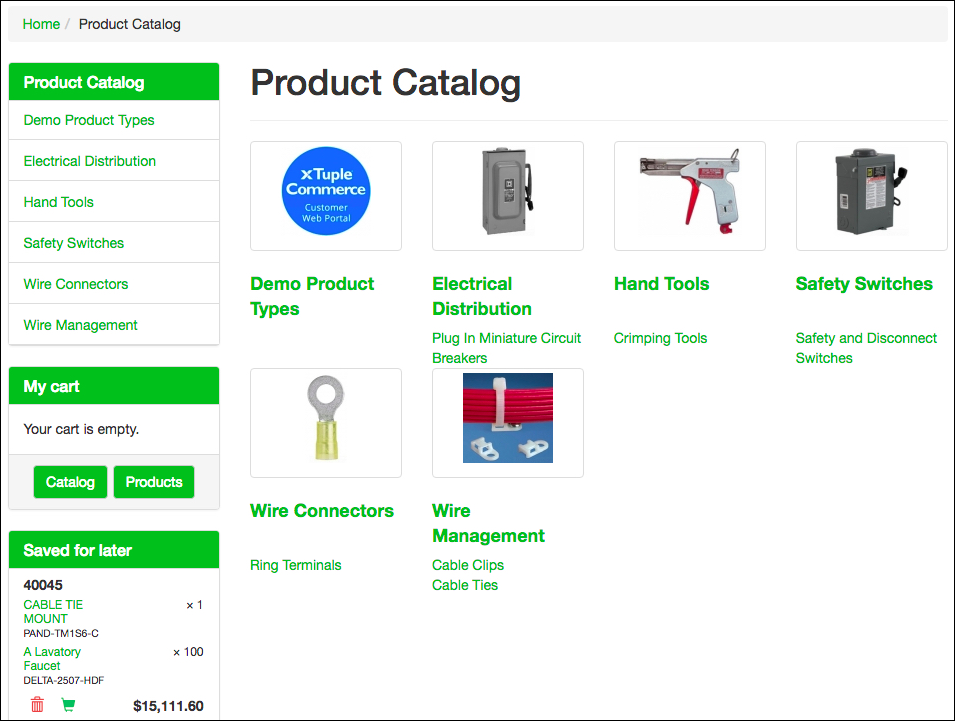
|
xTupleCommerce Product Guide |
In the previous chapter, we learned how to create and manage the product catalog in the ERP. Once your items have been web enabled in the ERP and organized into categories, you will see them in your online product catalog. To navigate to the product catalog, you can click on the Product Catalog option in the main menu. From there, you will notice that you can navigate using the images and text on the page or the navigation bar on the side of the page, which is an accordion style, text-only feature.
Let's go over how the product catalog navigation works using the images and text portion of the page. The product catalog will be organized by the categories that you have created. The title of the parent category will appear along with the corresponding image in the ERP. If you do not attach an image to the parent category, only the title will appear. Any child categories associated with a parent category will appear nested under the parent category as text only. If there are no child categories, only the parent category title will appear. Each of the highest level item groups will include a related image, as shown in the following screenshot:

Online Product Catalog page
When a user clicks on the title or image of a parent category, they will be directed to that specific product category page. If the category has child categories, the page will show those child categories with their associated images and all of the products for those child categories. If the category does not have any child categories, the items associated with the category in the ERP will appear. The item's image, title, will automatically appear.
If you have multiple layers of nested item groups, only the highest level will appear on the Product Catalog page.
Users can also navigate the product catalog via an accordion-style menu on the left side of the screen. When you click on an item group which contains nested groups, the menu will expand to show the lower level groupings. You can click on the child menu to view the products associated with that item group. If you click on the parent category again, you'll be directed to that product category page.
During implementation, you will need to decide if you want all users, including guest users, to be able to view the price, add items to their cart, and complete a checkout or if you would like to restrict the ability to see the price, add items to the cart, and/or complete a checkout to users who have logged in. Depending on those decisions, the price and ability to add a quantity to the cart may also appear along with the item. The price of the item may change depending on the pricing schedules set up in the ERP.
Pricing schedules are defined in the ERP and they are exposed to xTupleCommerce. If a particular customer type has an associated pricing schedule, with a customer type, then when a user logs into the xTupleCommerce portal, the displayed prices will match the pricing schedule. To learn more about the pricing schedules, see the "Pricing Schedule" section of the xTuple ERP Reference Guide.